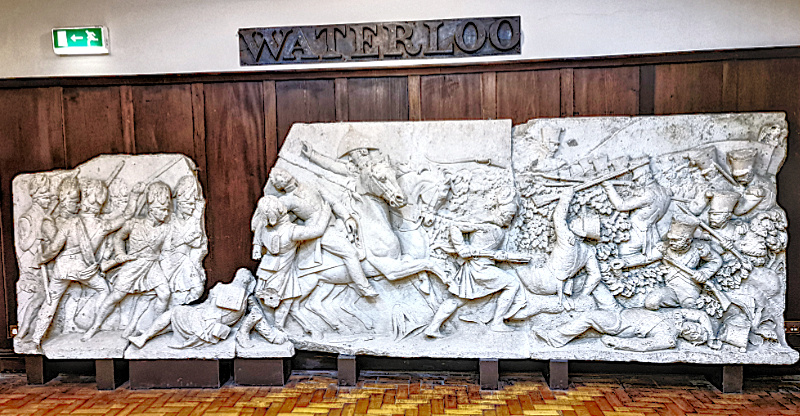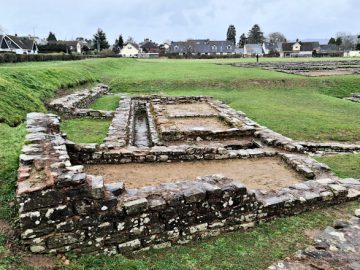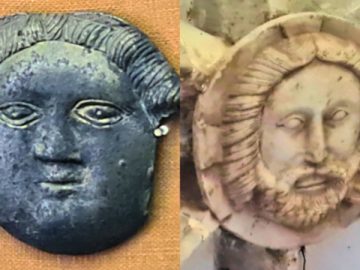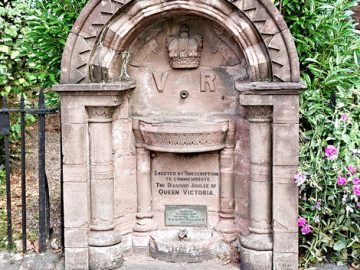Lieutenant general Thomas Picton was apparently, to put it mildly, not a very nice person. Even by the standards of his time, his peers considered his governorship of Trinidad brutal and cruel. It is even said that the Duke of Wellington considered him a “foul-mouthed devil as ever lived”. But he did something that Victorians loved so much that they would build enormous monuments to its posterity: he got himself killed in a heroic charge and, even better, at the Battle of Waterloo against Napoleonic French troops. So it was inevitable that a monument would be built in his remembrance, including a spectacular carved stone frieze depicting his death. An original version of that frieze is on display at Carmarthenshire Museum, so when I went to see it I just had to make a simple fan-art 3D scan for digital use.

Quick summary of this 3D creation
Overview: A fan-art 3D scan of a carved stone Picton Monument frieze.
Location: Carmarthenshire Museum, Abergwili, Carmarthen, Wales [map].
Date/era: Victorian, 1840s.
Software used: Kiri Engine, Meshmixer, Blender.
Intended use: Digital only.
Download: Sketchfab page (non-commercial license).
I made the scan using 82 12mp smartphone photos and the excellent Kiri Engine Android app. I set the quality for both mesh and texture details to medium, as I didn’t want the file size to get out of hand with such a large frieze. Then I reoriented and trimmed the 3D model in Meshmixer before opening it in Blender to decimate the mesh to around a quarter of original quality. That left me with a sensible file size and a quality still usable for digital imagery. You can see it on Sketchfab below (click the play button to load the model and view it in 3D).
If you want to know more about the history of the frieze, as well as stating it was donated by Carmarthenshire Antiquarian Society and Major W. K. Buckley, the museum information sign tells us:
“Frieze from the original Picton Monument. It shows the death of General Picton at the battle of Waterloo in 1815. Picton is seen falling from his horse into the arms of a soldier of the Highland Division. The first Picton Monument was built by public subscription in 1827. It was designed by John Nash, with decoration by E. H. Baily. Its local builder was Daniel Mainwaring. The monument was 23 metres tall. Relief scenes set into the monument’s base showed Picton’s attack on Badajoz and his death. The monument was demolished in 1846 because it was unsafe and unfashionable. It was replaced by the present obelisk. The earlier monument was broken up and given back to its subscribers. This frieze is probably a replacement ordered by E. H. Baily in the 1840s and never used. It became part of a garden wall in Johnstown, Carmarthen until it was given to the museum in 1978. In 1988, the second Picton Monument was rebuilt. General Picton’s Waterloo medal, a set of coins and a plaque were recovered and given to the museum.”
So regardless of what we can say about the man himself, his monument is an important piece of history and commemorates also the soldiers who fell in battle with him. And I hope you enjoyed reading about it too 🙂




